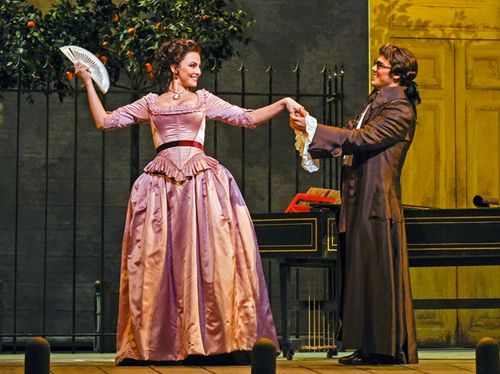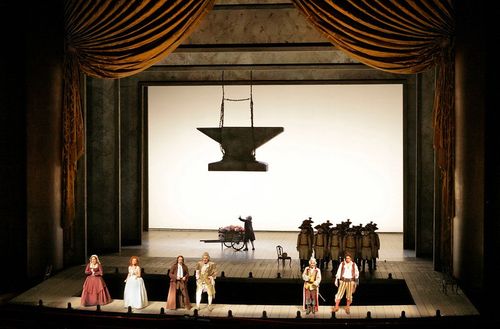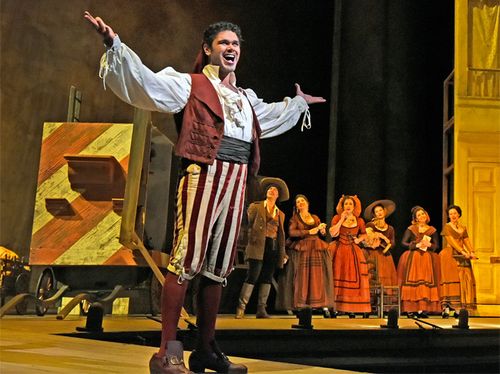James writes:
Last season at the Metropolitan it was “Il Barbiere di Siviglia.” This season, it was “Barber of Seville.” For the holidays, the Metropolitan Opera presented an abridged, English language, “family-friendly” adaptation of this 1816 warhorse of the bel canto repertoire. Does that mean it was a Reader’s Digest Rossini? Far from it. From Leonard Bernstein’s Young People’s Concerts to the “Family Saturdays” now produced by the New York City Ballet, family friendliness must not always be the enemy of music. As the Met demonstrated a decade ago with its abridged “Magic Flute,” this season’s Barber revealed that even great opera can, sometimes, go in for a trim.
With Bartlett Sher’s 2006 production shorn down from three-plus to a close-cropped “two hours and zero minutes”—you can just see the scissors coming out on that—this Barber seemed to lose little in the haircut, aside from an over-shaved overture, left bald and, in the hands of the conductor Antony Walker, rather languid. Otherwise the cuts were smart, and the blow-out extra “buffa,” with a new translation by the poet J. D. McClatchy, who also artfully took on the Met’s “Magic Flute” a decade ago.
Of course, Gioachino Rossini is, on his own, opera’s most family-friendly composer, contributing a greatest hits of childhood favorites, whether it be the theme for the “Lone Ranger” from the overture to Guillaume Tell or “The Rabbit of Seville” from, well, the present work. And perhaps Looney Tunes was not far from Sher’s mind as the cast squeezed through the bars of a metal fence as though it were rubber, or when he slowly dropped a gigantic anvil onto a breakaway pumpkin wagon at the end of the first act—an idea that clearly missed its mark by not printing “ACME” on the prop.
Then again, Looney Tunes, the Lone Ranger, and Bugs Bunny may mean little to a target audience of Millennials and Generation Z, who demand more than baby-boom sight gags to put their phones down for the two-hour run (the only device that came out for my matinee was a mom’s full-size iPad camera, which reminded me of the old anti-drug ad, “I learned it from watching you”).
The coloratura of mezzo-soprano Isabel Leonard as Rosina, who also headlined the Italian version at the Met, captivated my own mixed-age audience. The young Elliot Madore, in his debut as the barber Figaro, was especially amusing in his knowing, swashbuckling swagger, arguably having even more fun than Christopher Maltman did in the full version a year ago, although it would be hard to top Maltman’s “Largo al factotum.” Madore also showed good chemistry with Taylor Stayton as Count Almaviva, whose voice was clear but lacked some projection.
A passerelle, or catwalk, that wrapped around the orchestra pit presented some extra interest for the audience but potential challenges to the singers, both in vocalizing into the hall and not falling on the conductor’s baton. But a note should be said for the low-tech, period-like staging, more curtains and caster wheels than video and pyrotechnics, which only enhanced the immersive feel of the classical performance. Anyone who thinks that children only like the latest gadgets has never seen them enthralled in the analogue exoticism of a museum period room, or in this production of “Barber of Seville.” When it comes to family-friendly fare, opera can have a happy ending after all.


